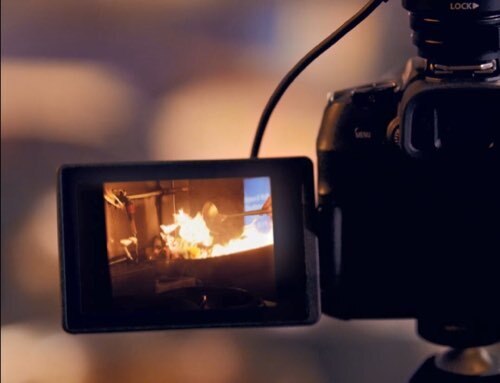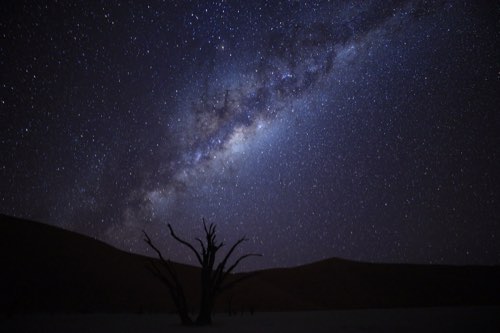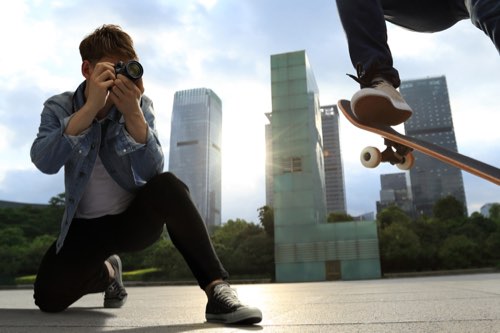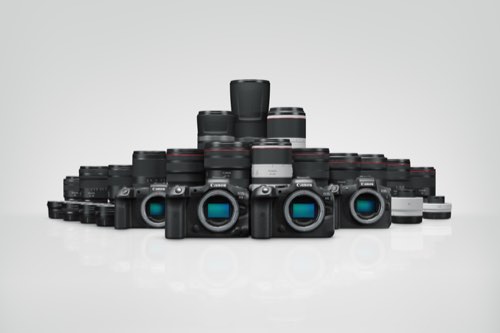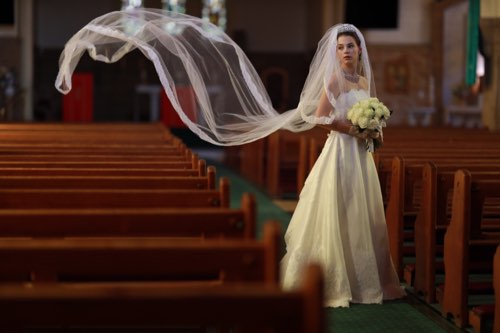One of the ideal prime lenses for portrait photography would be the EF85mm f/1.8 USM. With a mid-telephoto focal length, this lens can properly depict large bokeh to make the main subject stand out, while reproducing the form of the subject accurately. We recommend this lens to those who specialize in portrait photography. (Reported by: Teppei Kohno)

EOS 5D Mark III/ EF85mm f/1.8 USM/ FL: 85mm/ Manual exposure (f/1.8, 1/400 sec)/ ISO 500/ WB: Auto
1. It reproduces the form of the subject accurately, and allows better control over the background
One advantage of using the EF85mm f/1.8 USM with a full-frame camera to take portraits is its ability to shoot photos without distorting the form of the face or body. Even when shooting up close, it will not deform the face nor change the contours. Another key point is that it is easy to control the background. Since the angle of view of a mid-telephoto lens is narrow compared to a wide-angle lens, it is possible to regulate the background information and frame your subject accordingly. This, therefore, makes it easy to compose your photo without unnecessary items entering the frame in the background.
Moreover, it is easy to remain at a distance from the subject when taking a bust shot of a person with a focal length of 85mm. The lens enables you to shoot the subject at a distance that feels just right - not too far away, nor too close. This allows you instruct the subject on how to pose since they are not too distant from you, yet it is not too close that the subject feels uncomfortable. In portrait shooting, 85mm is a very handy focal length.
To shoot at an 85mm-equivalent angle of view using an APS-C camera, we recommend a 50mm prime lens. You will be able to obtain an 80mm angle of view at 35mm film-equivalent, which approximates to similar conditions when using 85mm on a full-frame camera.
Capturing a simple background without distorting faces at 85mm
The photo below was shot using a full-frame camera with the EF85mm f/1.8 USM lens. The contours of the face are faithfully reproduced, and the photo appears crisp without distortion. Due to the narrow angle of view, it is easy to regulate the background.

EOS 5D Mark III/ EF85mm f/1.8 USM/ FL: 85mm/ Manual exposure (f/4, 1/200 sec)/ ISO 500/ WB: Auto
Distortion occurs and controlling the background becomes tricky if you take portrait shots at 24mm
The photo below was shot at 24mm using a full-frame camera with a wide-angle lens (the EF24-70mm f/2.8L II USM). The contours of the face are distorted by the aberration of the lens, making the head appear larger. As the angle of view is wide, the background information is not regulated properly, depicting a slightly cluttered impression overall.
You can put these unique characteristics of wide-angle lenses to good use in landscape and street photography. Check out the following articles for more information:
Exploring Wide Angle Lenses Part 1: Photo Effects of Wide Angle Lenses
Exploring Wide Angle Lenses Part 2: Composition Techniques for Wide-Angle Lenses

EOS 5D Mark III/ EF24-70mm f/2.8L II USM/ FL: 24mm/ Manual exposure (f/4, 1/160 sec)/ ISO 500/ WB: Auto
2. It can create significant background bokeh and make the main subject stand out
Another plus of the EF85mm f/1.8 USM is that it enables you to take portraits with significant background bokeh owing to the maximum aperture (small f-number) of the lens. In portrait photography, background bokeh is an extremely important factor. By largely defocusing the background, you can depict the facial expressions of your subjects more strikingly and lessen the impact of a cluttered background. Also when shooting indoors, where there tends to be insufficient light, it is nice having the ability to shoot at smaller f-numbers. As high shutter speeds can be obtained with this lens, it makes handheld shooting easy. Being able to shoot at any angle makes it easy to capture various facial expressions.

EOS 5D Mark III/ EF85mm f/1.8 USM/ FL: 85mm/ Manual exposure (f/1.8, 1/1250 sec)/ ISO 500/ WB: Auto
With the EF85mm f/1.8 USM lens mounted on a full-frame camera, this photo was shot at the maximum aperture of f/1.8. By largely defocusing the background, the facial expression of the subject stands out more, making her more attractive. The high shutter speed was possible because of the large aperture setting.
Prime lenses ideal for portrait photography

EF lens
EF85mm f/1.8 USM
A mid-telephoto prime lens that is both lightweight and compact, yet bright at maximum aperture and is very easy to use. This lens is recommended for those using a full-frame camera. When mounted on an APS-C camera, this lens provides an angle of view of 136mm at 35mm film-equivalent.

EF lens
EF50mm f/1.8 STM
APS-C camera users can try shooting portraits with the EF50mm f/1.8 STM, a standard prime lens that provides an angle of view of 80mm at 35mm film-equivalent when mounted on an APS-C camera. Its strong points are its significant bokeh and fast AF.
EOS M-series users: Use the EF50mm f/1.8 STM with a mount adapter

If you are taking portraits on an EOS M-series camera, we recommend the EF50mm f/1.8 STM lens, which is bright at maximum aperture. When fitting this lens on an EOS M-series camera using the EF-EOS M mount adapter, you can obtain an angle of view of 80mm at 35mm film-equivalent. It is possible to shoot without restrictions on AF and AE.
For more portrait photography tips, check out the following articles:
Portrait Photography: 3 Aperture Settings Favoured by Professional Photographers
2 Simple Tips for Beautiful, Blur-free Indoor Portrait Photographs of Children
Receive the latest update on photography news, tips and tricks.
Be part of the SNAPSHOT Community.
Sign Up Now!
About the Author
Born in Tokyo in 1976, Kohno graduated with a Social Work degree from the Department of Sociology of Meiji Gakuin University, and apprenticed with photographer Masato Terauchi. He contributed to the first issue of photography magazine PHaT PHOTO and became an independent photographer after that, in 2003. The author of many books, Kohno not only shoots all sorts of commercial photographs, but also writes prolifically for camera and other magazines.








